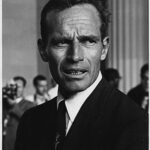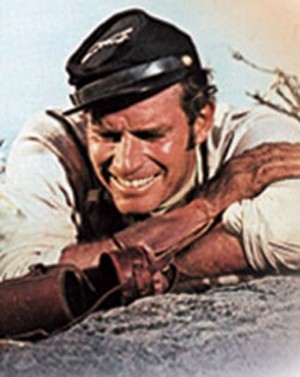With the powerful Yul Brynner, Charlton Heston, Anne Baxter, Vincent Price and Edward G. Robinson, the loved and hated characters of biblical times, Cecil B. DeMille’s The Ten Commandments (1956) is by far the best historical movie in its class. This masterpiece boasts a dual protagonist approach with Yul Brynner as Rameses, the future pharaoh of ancient Egypt, and Charlton Heston as Moses, his competitor. The movie has love, hatred, power, intrigue, justice, victory and defeat. The visual effects for the times are great!
Everything about the movie screams opulence. The casting is perfect, the costumes are brilliant, and the backdrops are believable. DeMille used 12,000 people and 15,000 animals just for the one exodus scene when the Hebrews were leaving Egypt. The language is even eloquent as most people in the film speak Moses’ name twice, “Oh Moses, Moses,” Nefretiri asks, “why of all men did I fall in love with the prince of fools?”
Of course, the princess Nefretiri is the woman between the two great men – the untouchable, viper of a beauty, played by Anne Baxter. She is to be named the queen of Egypt and wife to the next pharaoh which will be either the arrogant, overly confident Rameses, or her true love: Moses. The controversy surrounding this decision is that Ramses is the natural-born son of the great pharaoh, Sethi, while Moses, though raised as the pharaoh’s son, is the supposed son of the pharaoh’s sister.
But, Moses is not the son of the pharaoh’s sister, he is the son of Hebrew slaves who had put him upon the waters of the Nile River thirty years prior to save him from the pharaoh’s edict that every Hebrew man-child shall die. So, he grows up as an Egyptian prince in the pharaoh’s palace, falls in love with Nefretiri, is favored by the pharaoh himself, his friends, his neighboring enemy countries, and even the slaves. After all of this, when he’s an inch from becoming the next ruler of Egypt, he learns the truth of his lineage and that he is really a Hebrew slave.
He returns to his roots to find the meaning of what he is and casts all his fame and favor in the mud of the brick pits. This is when his search for what, his mother, Bithia calls, the “desert God, the hope of the hopeless,” begins. Moses and all who know him realize that he is the chosen Deliverer of God’s people.
The movie continues through the struggle between Rameses, who became pharaoh and gained Nefretiri as his wife, and Moses who fights to free the Hebrew slaves. The story follows the five books of the early Bible as closely as can be imagined. Cecil B. DeMille produced the most expensive, most frequently viewed movie of all times up to that point in 1956.
Reference:
- Review of the movie with photos – www.thecinemalaser.com/dvd_reviews/ten-commandments-dvd.htm Bio of DeMille – www.lostcitydemille.com/bio.html Ancient Egypt – www.eyelid.co.uk/


